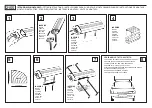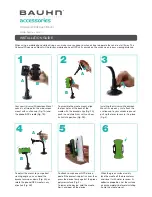
3.1.7 The Application Requirements for Power Supply Interruption
Time
1 Under the situation that the battery system has not been recharged after accident
discharge, and just at the very time, the power supply of the communication
station stops, often the battery system cannot be used to supply the power further.
If continue working, it could lead the battery life shorter because of the battery
deep discharge
2 If the accumulative discharge capacity reaches 50%~80% of the battery rated
capacity for one power supply interruption, the float charging time cannot be less
than 48h after balancing charging changes into float charging. If the accumulative
discharge capacity is less than 50% of the battery rated capacity for several
power supply interruption in one day, the float charging time cannot be less than
24h after balancing charging changes into float charging.
3 As far as the communication station, which has very good power supply
conditions, is concerned, protective C
10
capacity discharge should be done every
6 months (depth of discharge is 50%), and the battery system should be
recharged in time.
4 Auxiliary power supply equipment, such as Oil Power Generator etc., should be
equipped for those communication stations in which frequent power interruption
exists and the power interruption time is very long. If discharge depth of the
battery system is above 80%, and the public power supply has not restore yet, Oil
Power Generator should be used to supply power to the communication station
equipments and recharge the battery at the same time.
3.2 Maintenance Period and Requirements
1 The newly installed battery system should be checked in the following aspects
when it is put into use --- whether or not the terminal voltage of every battery is
normal, charging and discharging current are stable, fastening parts are loose,
connecting parts and the battery terminals are being heated up by touch during
charge and discharge.










































